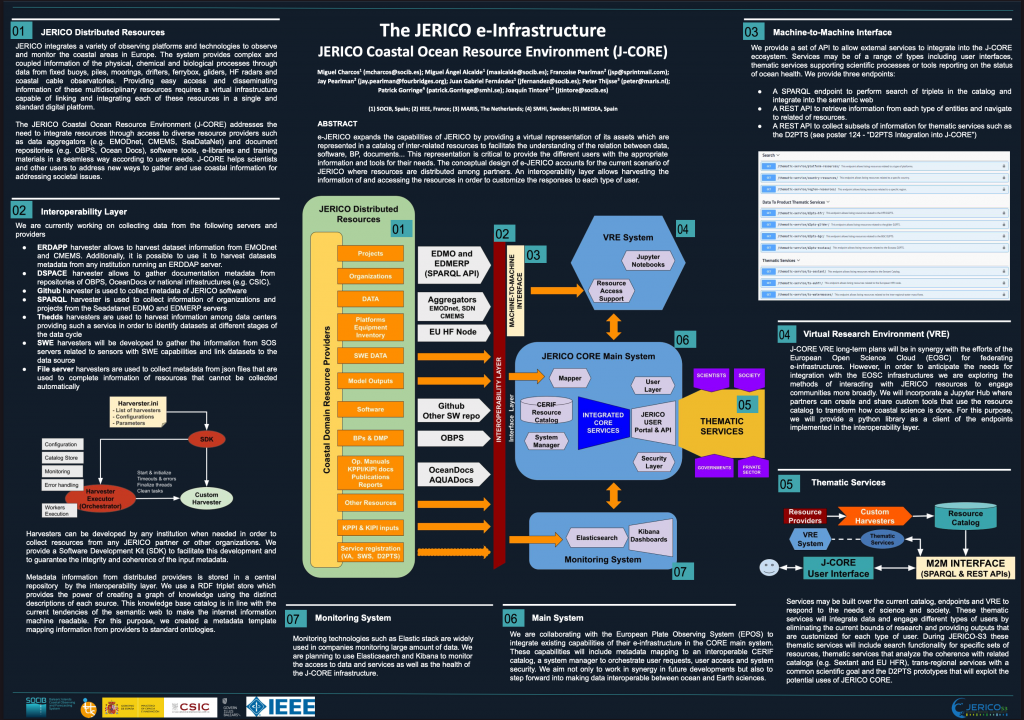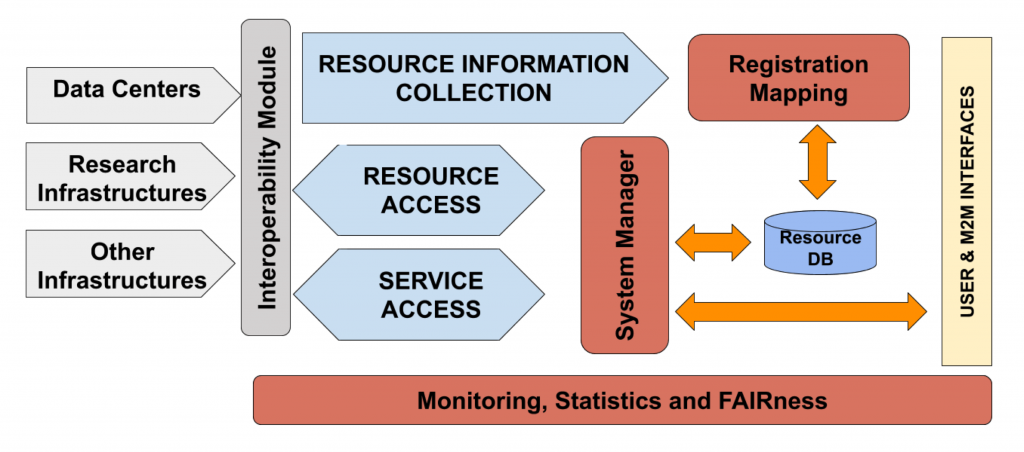
Introduction to e-JERICO
The Joint European Research Infrastructure network for Coastal Observatory (JERICO) integrates a variety of observing platforms and technologies to observe and monitor the coastal areas in Europe. This meta-observing system provides complex and coupled information of the physical, chemical and biological processes through data from fixed buoys, piles, moorings, drifters, ferrybox, gliders, HF radars and coastal cable observatories. Achieving an understanding of the coastal processes requires high-quality data that cannot be obtained without standard and methodical work from the entire JERICO community. JERICO achieved the necessary interconnection between the various partners during the JERICO and JERICO-NEXT projects over the last eight years. This progress resulted in a diversity of resources for users including data, best practices, Sensor Web Enablement, software, manuals and publications. Moreover, JERICO aims to provide high quality data and data products in an optimal way facilitating the outcomes for different data user types including science, society, governments and private sectors.
Providing easy access and disseminating information of this amalgam of multidisciplinary resources requires a virtual infrastructure capable of linking and integrating each of these resources in a single and standard digital platform. The harmonization and connection of the information will have a critical impact on integrating observations of the physical, chemical and biological fields from the various regions that are dispersed around Europe. Virtual infrastructures address the need to integrate resources to support work and research. The current tendency in the international context is to implement these virtual and collaborative environments. For example, the European Plate Observing System (EPOS) succeeded in adopting this strategy to facilitate and integrate resources from distributed research infrastructures in a diversified context that is similar to JERICO. Similarly, for coastal ocean data, e-JERICO will provide access to the distributed resources from JERICO in a seamless and custom way according to the needs of the various users.
e-JERICO conceptial design
Providing organized and custom information to users requires implementing two concepts. On one hand, it is necessary to collect the information of the resources that are available in the community. Then, the information of these resources should be organized, linked and persisted in a metadata database, namely a resources catalog. On the other hand, the system should manage the requests from users, access the information in the resource catalog and provide the user with the custom outputs based on the context of the specific request. These requests may require access to the resources per sé that are distributed in the various infrastructures of the JERICO community and other external systems. e-JERICO is not an aggregator of data, but a data and service provider to the ocean community. It draws on different repositories such as EMODnet, ICOS, the Ocean Best Practices System, Ocean Docs and others. Due to the diverse nature of these resources and the heterogeneity of methods of the infrastructures hosting them, resources can be stored, accessed and interpreted in a myriad ways. The interaction between the main core system with the data centers and infrastructures is realized through an interoperability module that is capable of translating the distributed information into the common standard of e-JERICO. On the other side, the user access or machine-to-machine interaction requires a layer to gather the external petition and returns the information in a customized manner. Figure 1 illustrates the components of the e-JERICO infrastructure and their relationship. Managing the resources of the community and their connections facilitate processes aiming to monitor and evaluate the status of the system, to provide statistics and key performance indicators of the work of the community as well as measurement of FAIRness of the data cycle for each specific flow.

Conclusion
This presentation will review the capabilities and challenges in building the emerging e-JERICO. It is an interesting illustration of working in a very diverse environment supporting users from science to applications and policy, supplying data, data products, services and other resources of the JERICO community in an integrated, free, open, and organized way. Through this e-infrastructure, JERICO will facilitate the access to coastal information and enhance the capacity to manage the interaction between distributed infrastructures worldwide, in particular across Europe.
